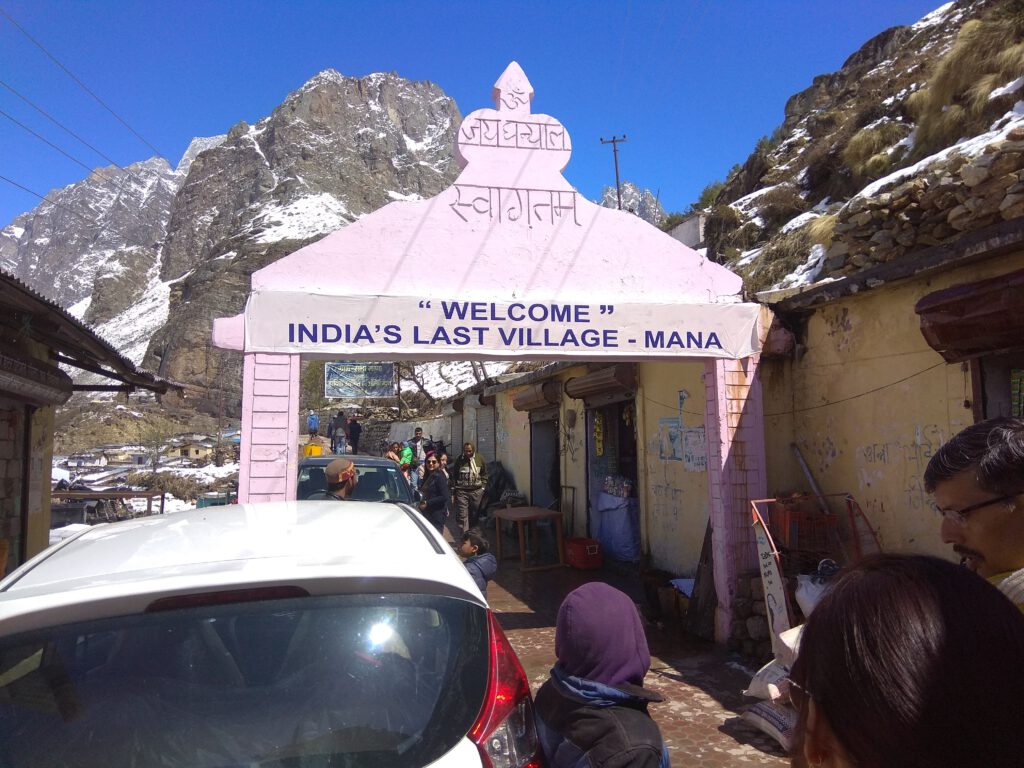Mana Gaon – Mana is a village in the district of Chamoli in the Indian state of Uttarakhand, located at an altitude of 3,200 meters {10,500 feet}. It is located on the northern terminus of National Highway 7, Mana is the first village before the Mana Pass and is 26 kilometres from the border of India and Tibet.
Mana Village is famous for its many things like woolen garments and materials(mostly of sheep wool), shawls, caps, muffler, ashan, pankhi(A thin blanket made of sheep wool), etc. Mana is famous for its potatoes and kidney beans.
The traces of Hindu mythology, Mahabharata, are visible in Mana. It is believed that Pandavas had to pass through this village on their journey to heaven. Bheem, the strongest of the five brothers, build a rock bridge in order to cross the Sarasvati river.
Mana village is best to visit from May to early November. From November to April, the region remains inaccessible due to heavy snowfall.
Just below the Badrinath temple, there is a group of hot sulphur springs. They are considered to be equipped with medicinal properties. It is noteworthy that the springs have a year-round temperature of 55°C, while outside temperature remains below 17 °C. There are two water ponds called Narad Kund and Surya Kund.
Major Points of Interest in Mana Gaon
Vyas Gufa (Vyas Cave)
Historical Significance: It is thought that the philosopher Ved Vyas wrote the Mahabharata in this ancient cave. The cave draws both pilgrims and history enthusiasts since it is a spiritual retreat.
Architecture: The natural splendor of the surroundings blends well with the cave’s understated yet peaceful architecture, creating the ideal atmosphere for reflection and meditation.
Ganesh Gufa (Ganesh Cave)
Meaning in Mythology: It is said that in this cave, Lord Ganesha wrote the Mahabharata under Vyas’s command. It is a well-liked destination for pilgrims and has significant religious importance.
Location: The peaceful surroundings of Ganesh Gufa, which is next to Vyas Gufa, are available to tourists.
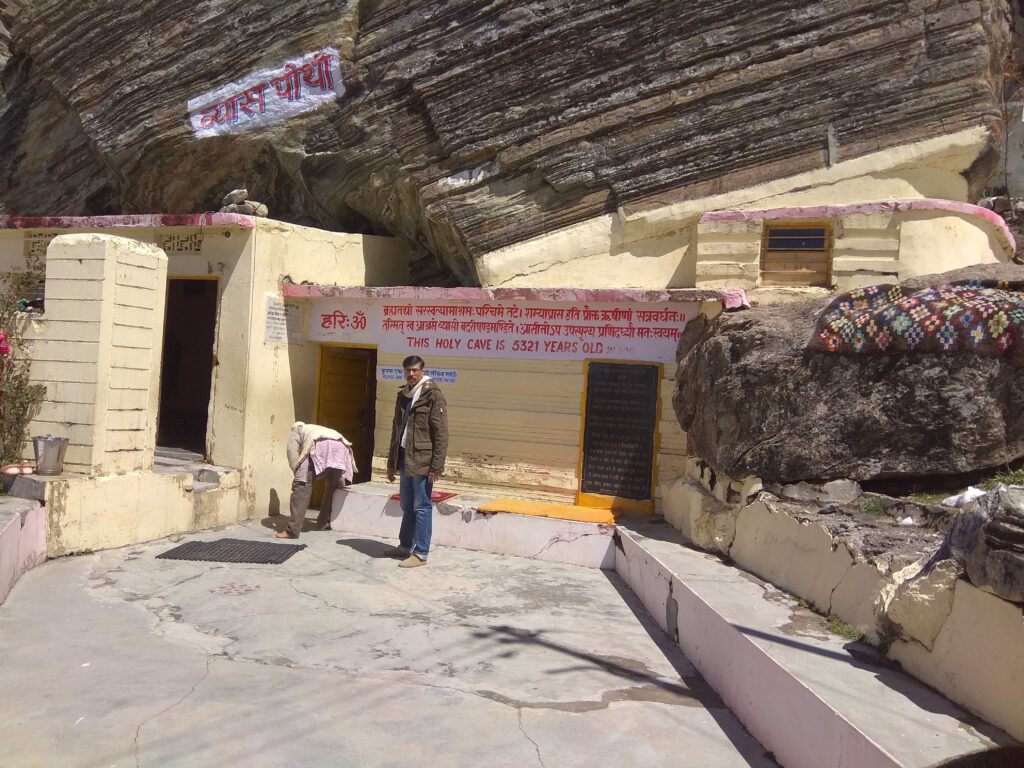
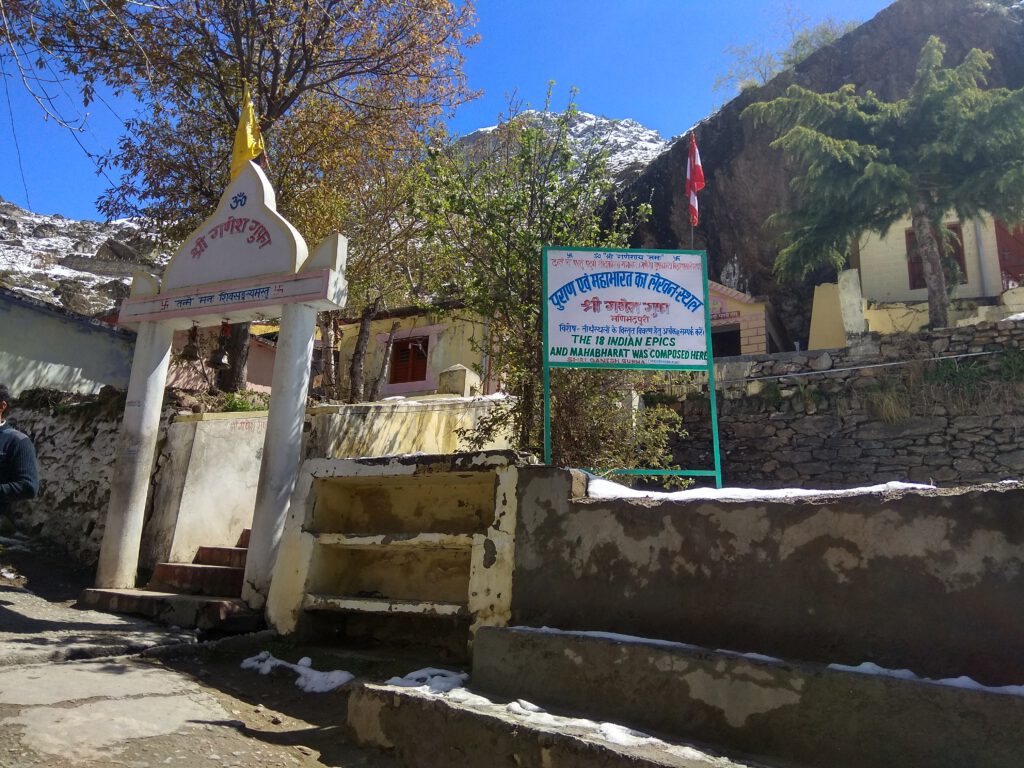
Bheem Pul
Legend: Bheem, one of the Pandava brothers, is credited with placing this naturally occurring rock bridge over the Saraswati River so that Draupadi might cross. It is a natural wonder where mythology and nature coexist.
Scenic Beauty: Bheem Pul is a photographer’s paradise because of the dramatic attraction of the raging Saraswati River and the untamed environment.
Saraswati River
Sacred Waters: Despite its modest size, the Saraswati River has great spiritual significance. It is thought to be one of the holy rivers described in historical writings.
Natural Beauty: The river’s tumbling course through the rocky landscape is a captivating sight that is ideal for those who love the outdoors.
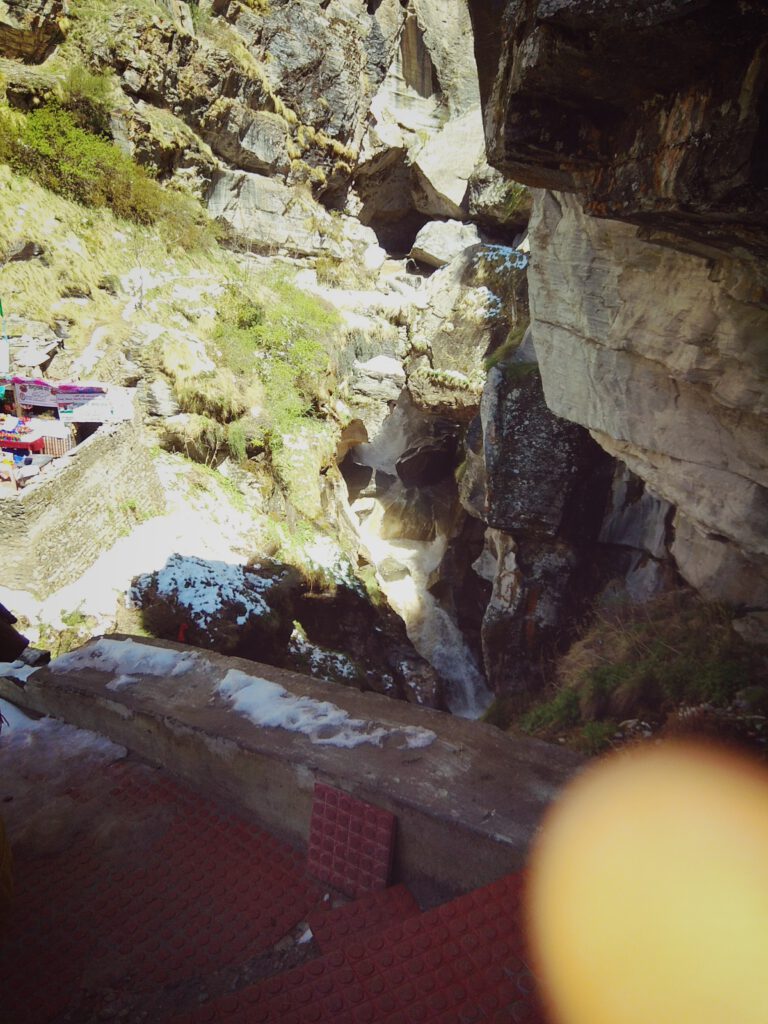
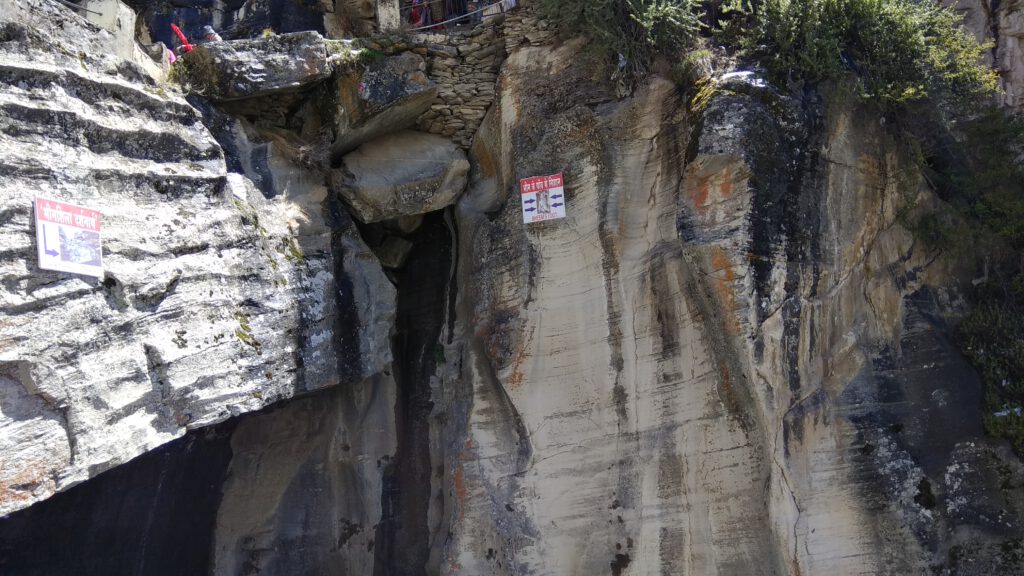
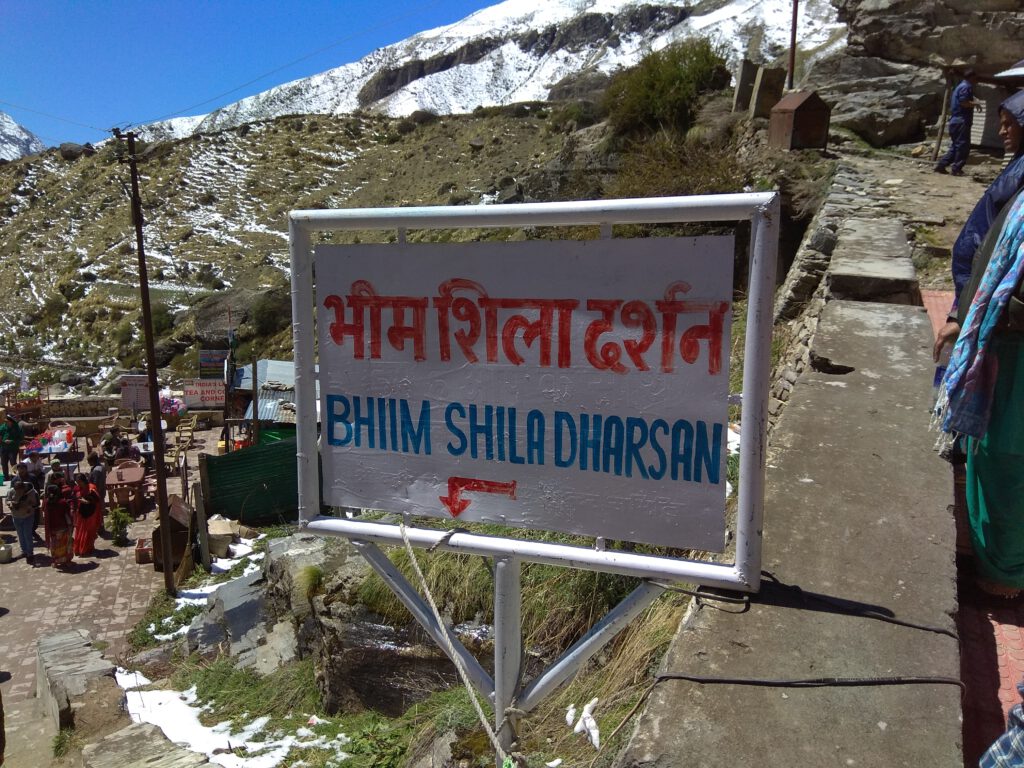
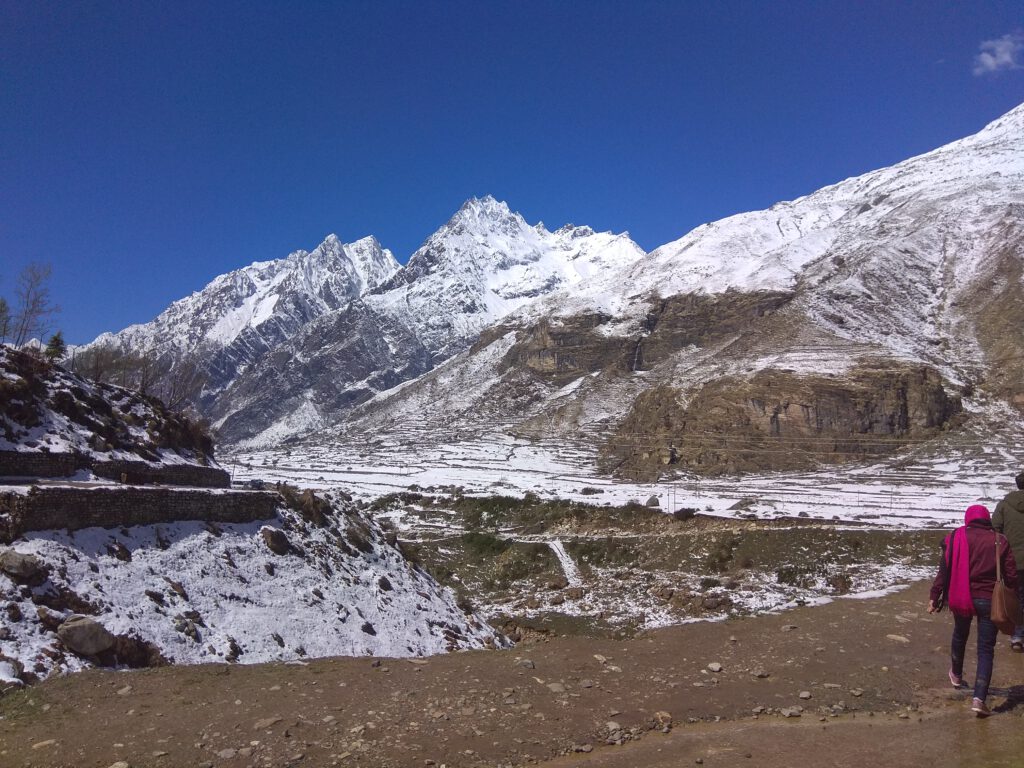
Best Time to Visit
Summer (May to June): This is a great time to go trekking and sightseeing because of the nice weather.
Autumn (September to October): The clear skies and breathtaking views of the Himalayas are a highlight of this post-monsoon season.

